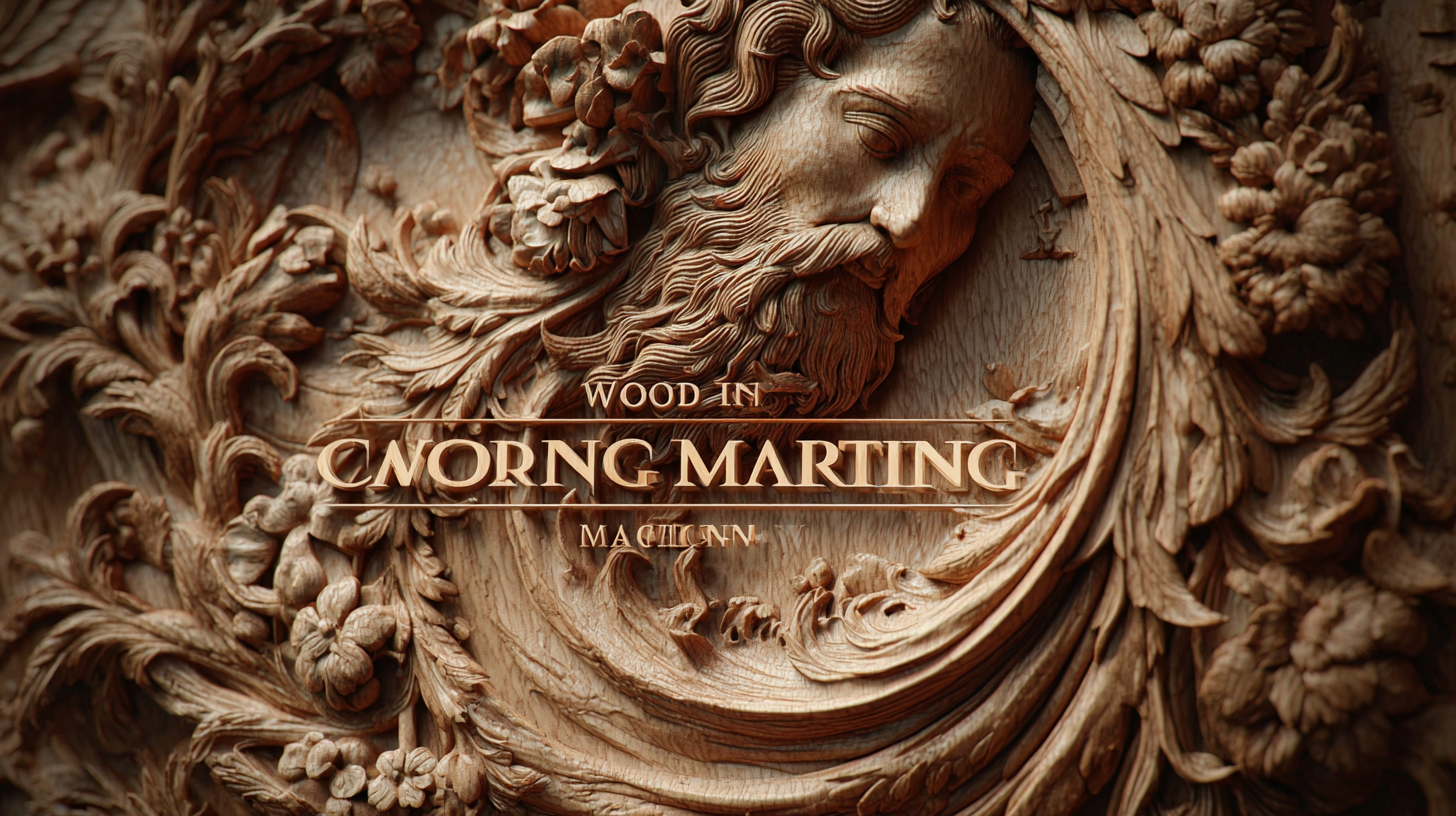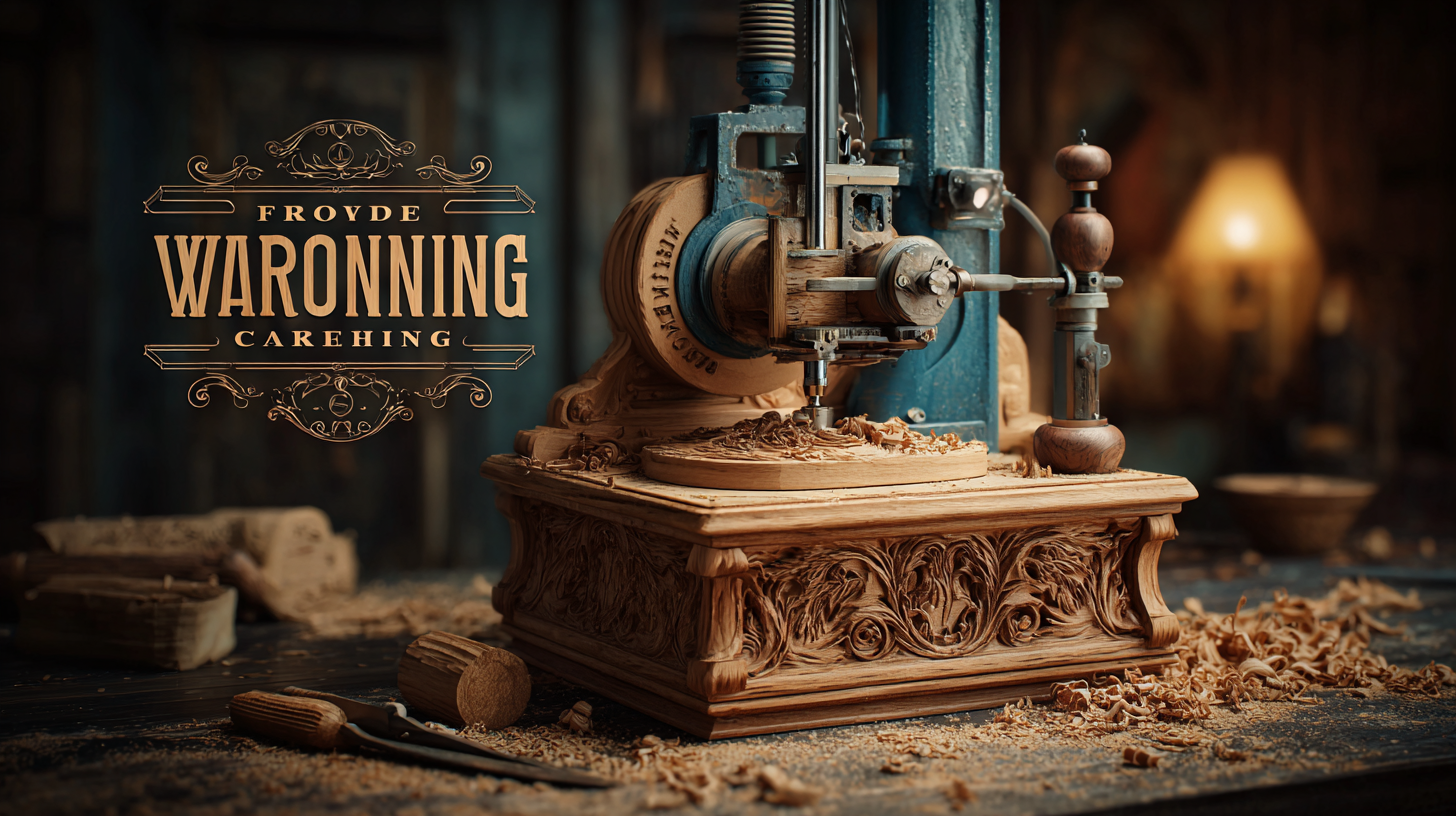The Future of Precision Crafting: Revolutionizing Wood Carving with the Best Wood Carving Machines
As we approach 2025, the wood carving industry stands on the brink of a technological transformation, largely driven by advancements in wood carving machines. According to a report by MarketsandMarkets, the global woodworking machinery market, which includes precision carving tools, is projected to reach $8.4 billion by 2025, growing at a CAGR of 6.3%. This surge in market value reflects a growing demand for high-precision, efficient, and user-friendly carving solutions that cater to both hobbyists and professional artisans.

The integration of CNC technology in wood carving machines not only enhances precision but also significantly reduces production times, allowing artisans to explore more intricate designs than ever before. As the industry evolves, it becomes imperative for craftsmen to stay informed about these innovations, which promise to revolutionize traditional wood carving techniques and expand creative possibilities.
The Evolution of Wood Carving Machines: A Look at Recent Innovations
The evolution of wood carving machines has rapidly progressed, transforming a traditional art into a precision-driven craft. Recent innovations have introduced cutting-edge technologies that empower artisans and hobbyists alike to achieve intricate designs with unmatched accuracy. From CNC routers that automate the carving process to laser engravers that offer meticulous detailing, these machines expedite production without sacrificing artistry. The integration of software that simplifies design processes also allows for greater creativity, enabling users to customize their projects seamlessly.
Tip: When investing in a wood carving machine, consider the software compatibility as it can significantly influence your workflow. Choosing a model that supports popular design software will enhance your capabilities and streamline your project timelines.

Furthermore, portable wood carving machines are gaining popularity, making the art accessible to those who may not have the space for larger equipment. These compact devices enable users to carve on the go, making it easier to experiment and innovate. As these machines become more user-friendly with intuitive interfaces, they invite beginners to explore their creativity without feeling overwhelmed.
Tip: Always prioritize safety when using wood carving machines. Familiarize yourself with the features and recommended practices of your specific model to avoid accidents and ensure optimal performance.
How Advanced Technology is Enhancing Precision in Wood Crafting
Advanced technology has significantly transformed the landscape of wood crafting, particularly in precision carving. According to a report by MarketsandMarkets, the global wood carving machines market is projected to grow from $2.34 billion in 2020 to $3.95 billion by 2025, reflecting a compound annual growth rate (CAGR) of 10.5%. This growth indicates a rising demand for high-precision tools that integrate advanced technological features, such as computer numerical control (CNC) and laser engraving.
CNC machines, in particular, have redefined the standards of precision in wood crafting. They allow artisans to execute intricate designs with consistent accuracy, reducing the margin of human error. A study by Technavio states that the adoption of CNC technology in wood carving has enhanced operational efficiency by up to 30%. Additionally, these machines come equipped with software that allows users to create and modify designs digitally, streamlining the workflow and making it easier for woodworkers to innovate while maintaining high levels of precision. As a result, the art of wood carving is now not only a testament to skill but also a fusion of craftsmanship and technological advancement.
The Top Wood Carving Machines to Watch in 2025
As we look ahead to 2025, the landscape of wood carving is set to undergo a transformational shift thanks to advancements in wood carving machines. According to a recent report by Market Research Future, the woodworking machinery market is expected to grow at a compound annual growth rate (CAGR) of 5.6% through 2025. This growth is largely driven by the rising demand for precision crafting and the integration of smart technology in machinery. Enthusiasts and professionals alike will benefit from innovations like CNC (Computer Numerical Control) machines, which provide unparalleled accuracy and efficiency in wood carving.
When choosing a wood carving machine, consider investing in equipment that features user-friendly software and compatibility with various design files. These features enhance creativity and productivity, allowing artisans to experiment with complex designs effortlessly. Pay attention to models that come with adjustable speed settings. This flexibility is essential for working with different types of wood and achieving the desired finish.
Tips for beginner woodcarvers: Start with a mid-range CNC machine that offers a good balance between functionality and cost. Always read product reviews and seek feedback from the woodworking community to make informed decisions. Additionally, don’t overlook the importance of training resources; many manufacturers provide tutorials to help you make the most out of your new machine.
The Future of Precision Crafting: Revolutionizing Wood Carving with the Best Wood Carving Machines - The Top Wood Carving Machines to Watch in 2025
| Model | Power (Watts) | Max Cutting Depth (mm) | Speed (RPM) | Weight (kg) | Features |
|---|---|---|---|---|---|
| Model A1 | 1500 | 60 | 30000 | 2.5 | Variable Speed Control, Laser Guide |
| Model B2 | 1800 | 70 | 35000 | 3.0 | Digital Display, Dust Collection |
| Model C3 | 2000 | 80 | 40000 | 3.5 | Bluetooth Connectivity, App Control |
| Model D4 | 2200 | 90 | 45000 | 4.0 | Self-Cleaning, Multi-tool Compatibility |
| Model E5 | 2500 | 100 | 50000 | 5.0 | Ergonomic Design, Advanced Safety Features |
Sustainability in Wood Carving: Eco-Friendly Practices and Machines
As the wood carving industry continues to evolve, sustainability becomes increasingly important. Eco-friendly practices not only reduce the carbon footprint of wood carving but also ensure that artisans can work responsibly with nature. One notable aspect is the selection of materials. Opting for sustainably sourced woods, like reclaimed or certified timber, can significantly lessen the environmental impact. Additionally, many modern wood carving machines are designed with energy efficiency in mind, reducing electricity consumption during the crafting process.
Tips for sustainable wood carving include embracing techniques that minimize waste, such as using digital design tools to optimize cuts and plan projects meticulously. Furthermore, consider investing in machines that use lower emission technology. This not only benefits the environment but can also improve air quality in your workshop. Lastly, make sure to properly maintain your equipment, as well-maintained machines operate more efficiently and last longer, contributing to sustainability efforts by reducing the need for new tools. By integrating these practices, woodcarvers can contribute positively to the environment while producing beautiful and intricate designs.

The Future Workforce: Skills Needed for the Next Generation of Wood Carvers
As the woodworking industry evolves, the skills required for the next generation of wood carvers are rapidly changing, driven by advancements in technology and machine precision. According to a report by IBISWorld, the woodworking industry is projected to grow at an annual rate of 3.2% over the next five years, highlighting the increasing demand for skilled craftsmen. The integration of CNC (Computer Numerical Control) machines and laser cutting technology has transformed traditional wood carving techniques, necessitating a new skill set that combines artistry with technological proficiency.
To thrive in this future landscape, aspiring wood carvers must embrace digital tools and software that enhance design and execution processes. A survey from the Association of Woodworking and Furnishing Suppliers (AWFS) indicates that 70% of industry employers prioritize hiring individuals who are adept in using CAD (Computer-Aided Design) and CAM (Computer-Aided Manufacturing) systems. These skills enable woodworkers to create intricate designs with greater accuracy and efficiency, allowing for a new level of creativity that was previously unattainable. Moreover, as sustainability becomes a vital consideration in woodworking, knowledge of eco-friendly materials and practices is becoming increasingly essential. The future workforce must not only be technically skilled but also environmentally conscious to meet the growing expectations of consumers and the industry alike.
Siemensstraße 13-15
47608 Geldern
NRW Deutschland
Mail: sale@atmmachinesolutions.com
Head office:
+49 (0) 2831 91021-20
Fax:
+49 (0) 2831 91021-99
SUPPORT and INFO
from 3 p.m. to 6 p.m:
+49 (0) 2831 91021-60
( please ring for a long time )
Monday to Friday
8.00 – 12.30
and 13.00 – 15.00
Visit / collection by appointment only!
➣ Sign up for our newsletter
Benefit from a 20% discount, don’t miss any events and always stay up to date.
To access the actual content, click on the button below. Please note that data will be passed on to third-party providers.
More information







